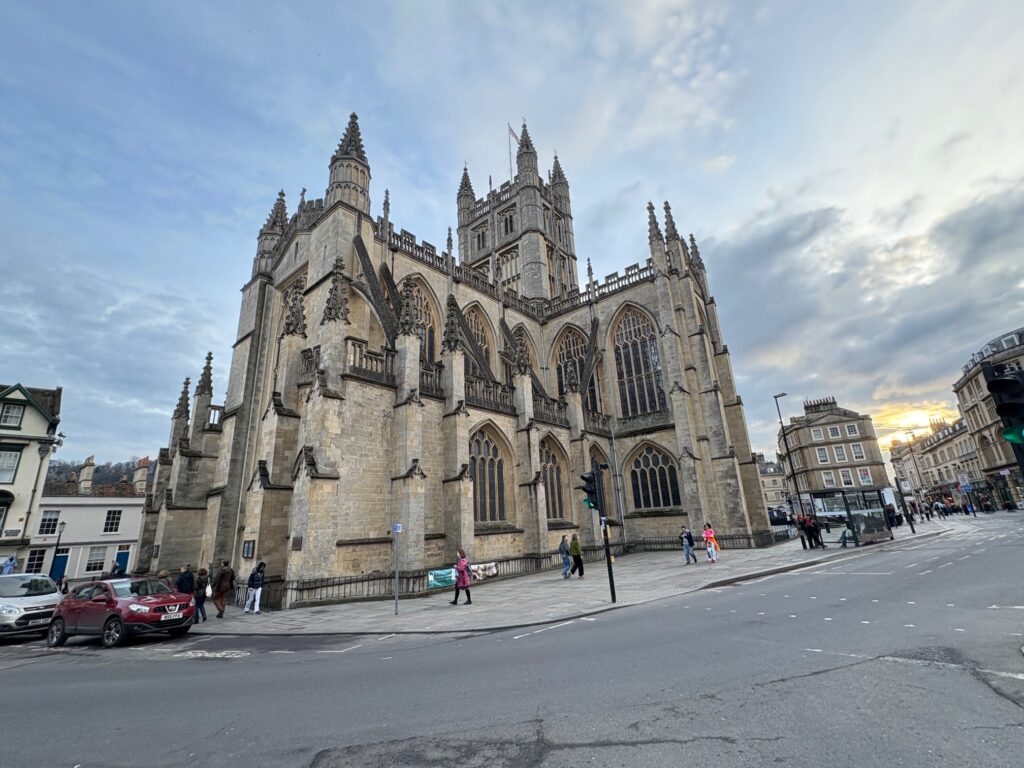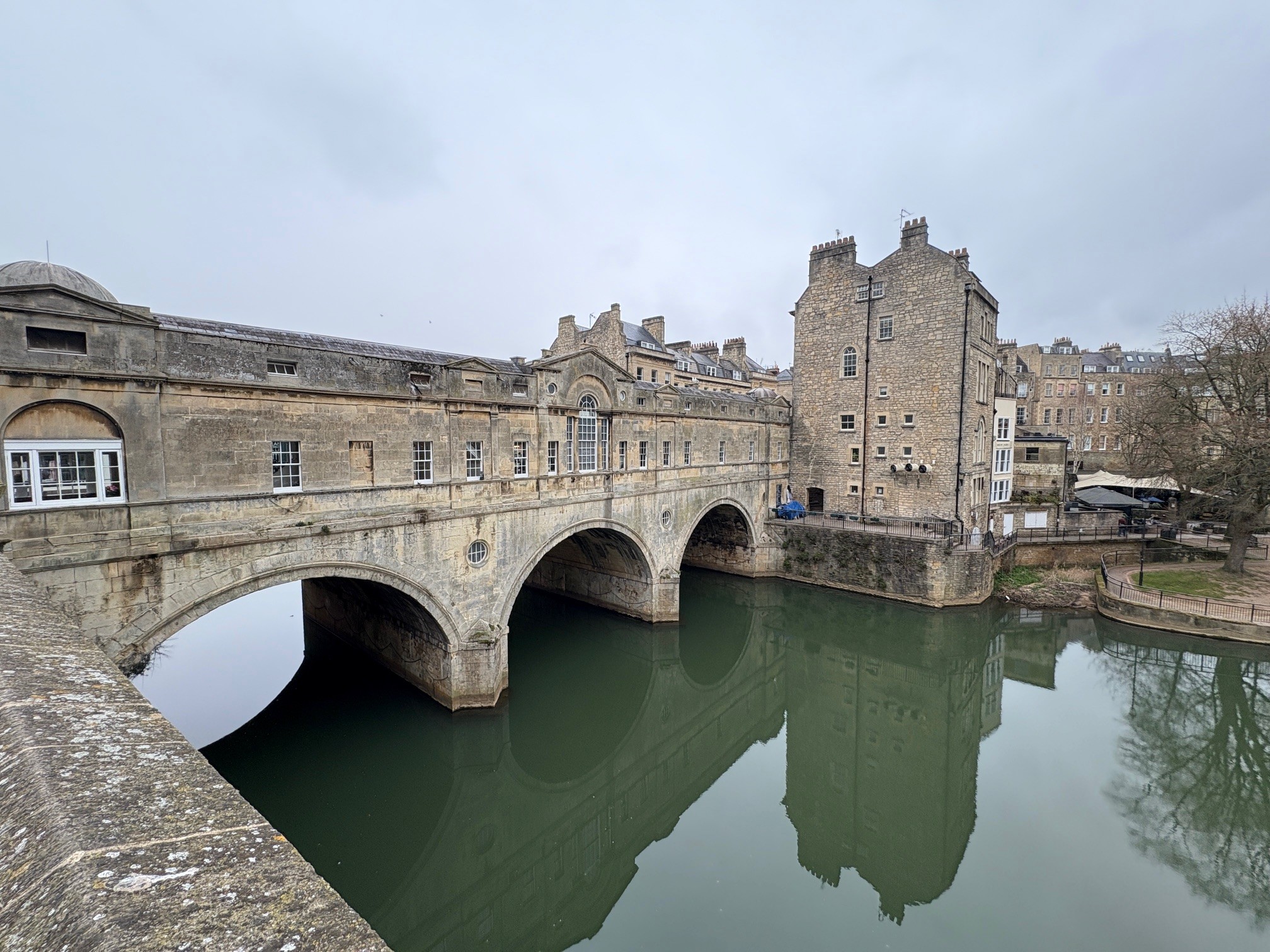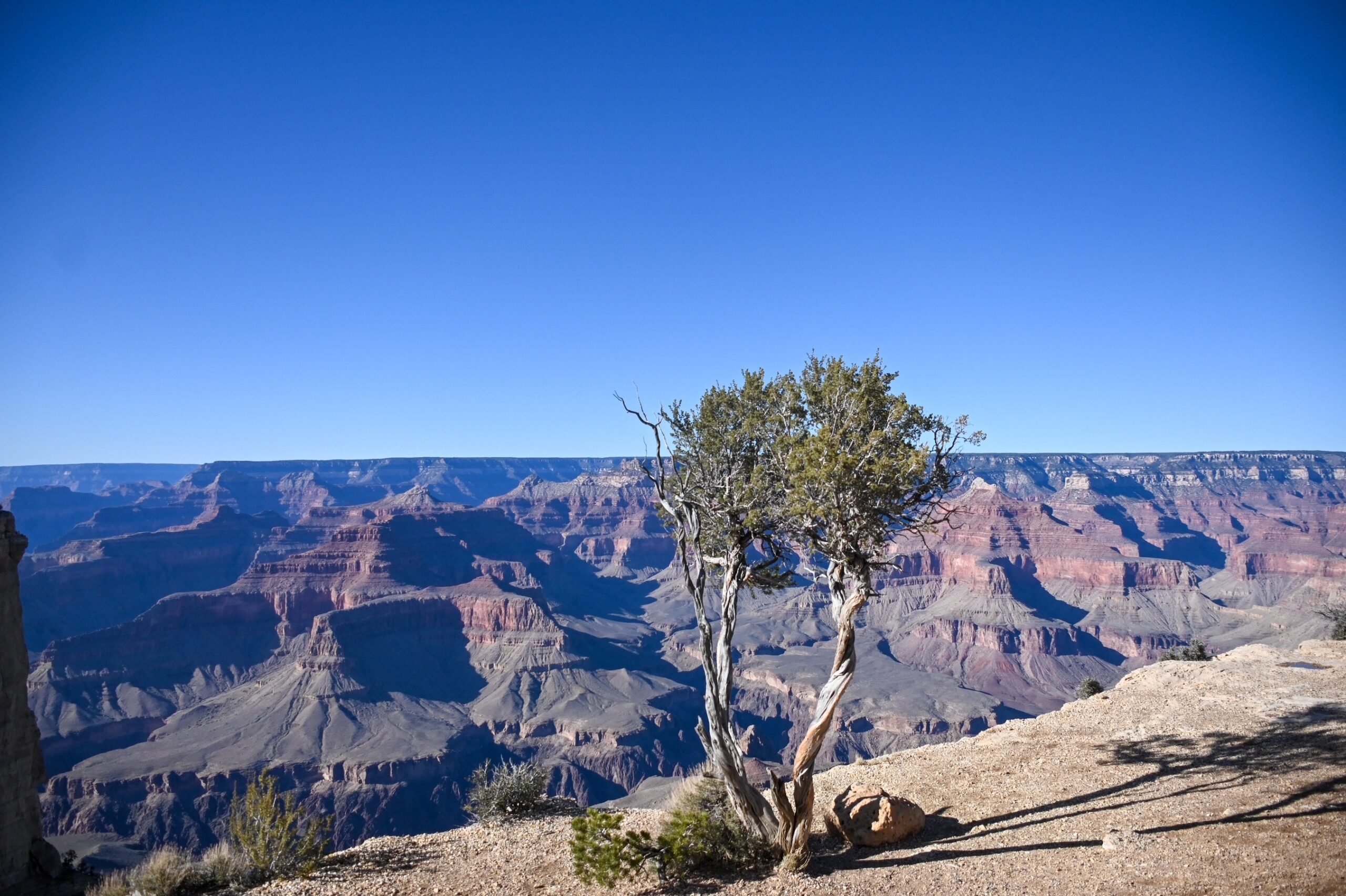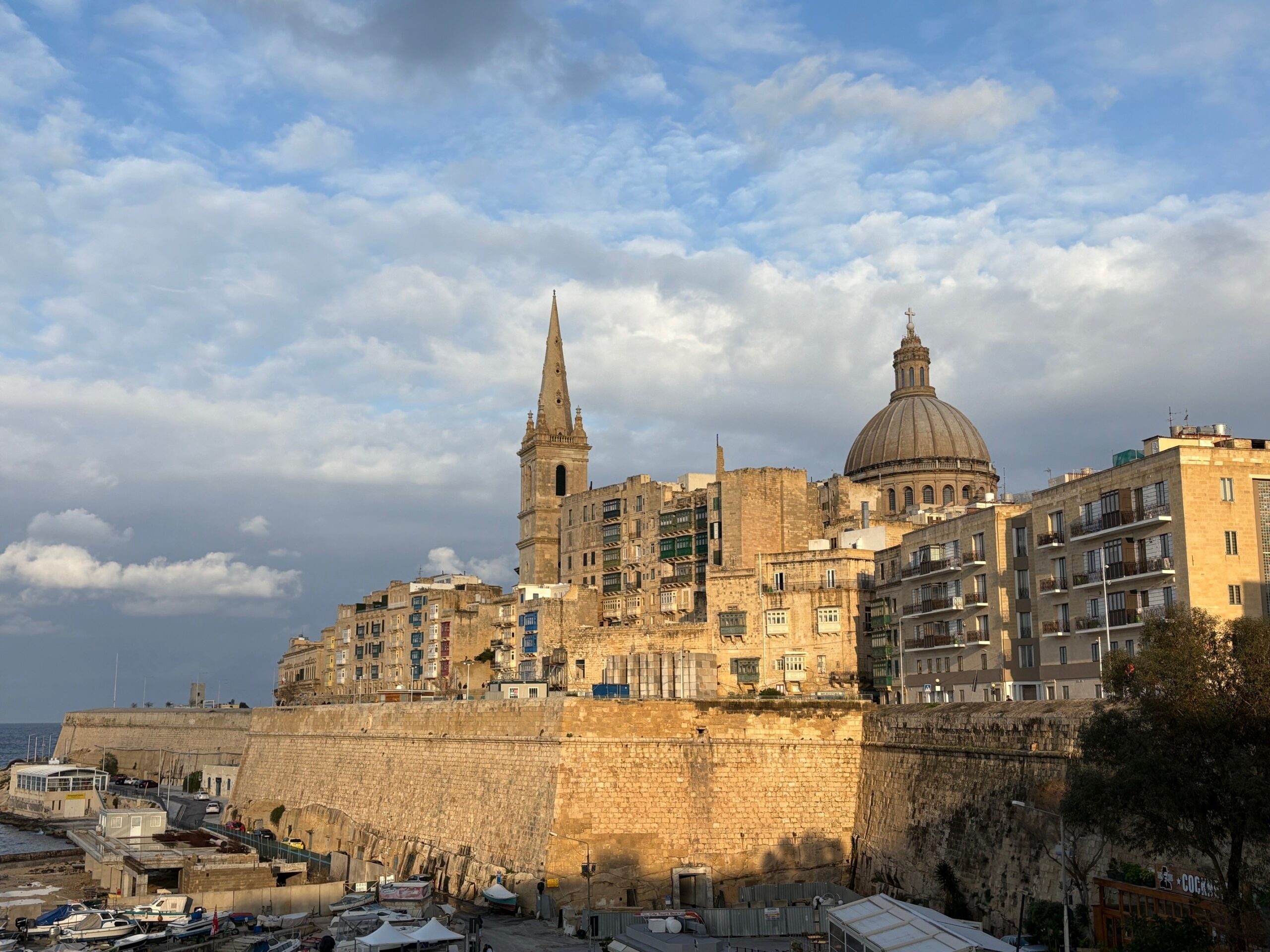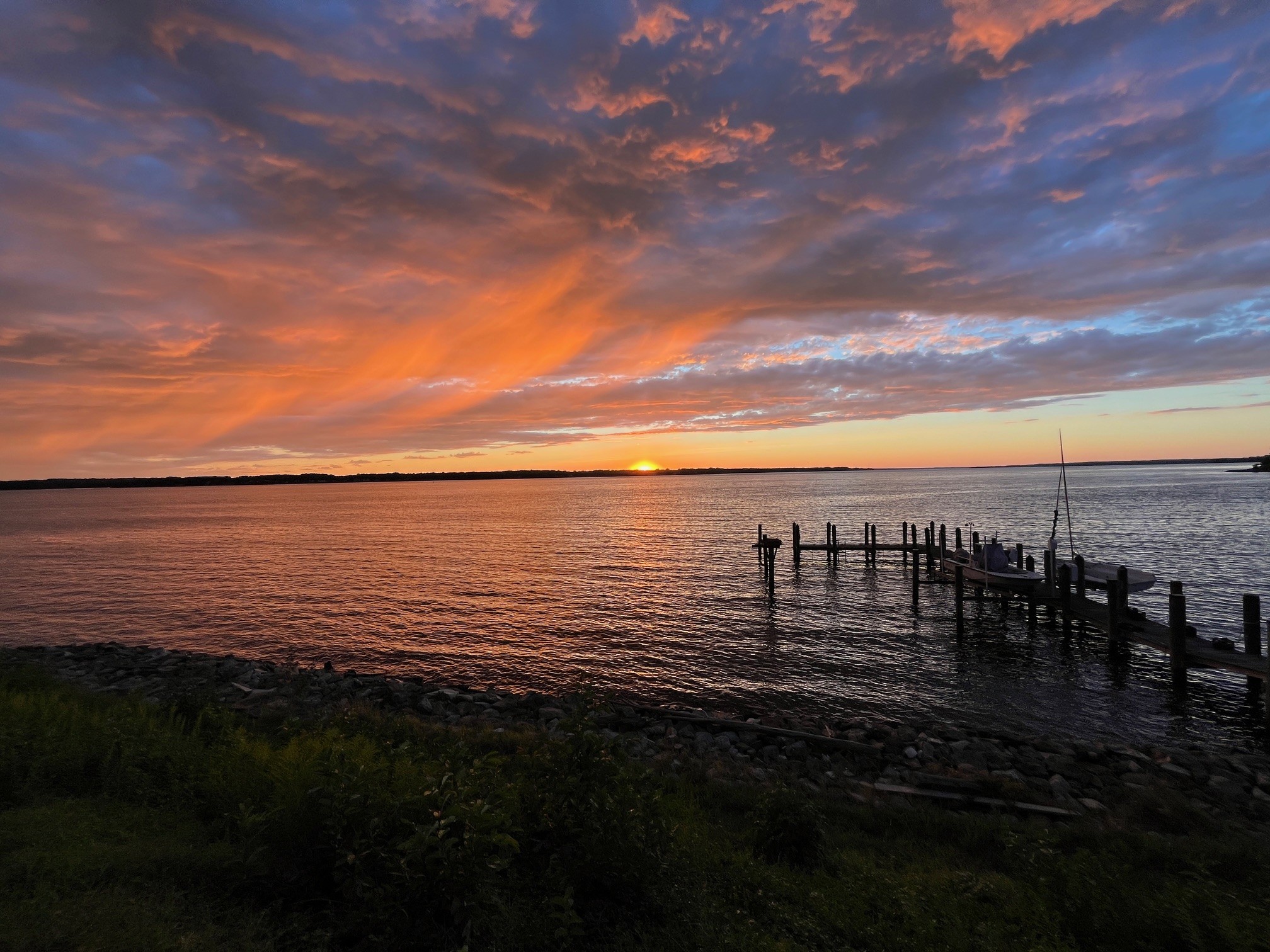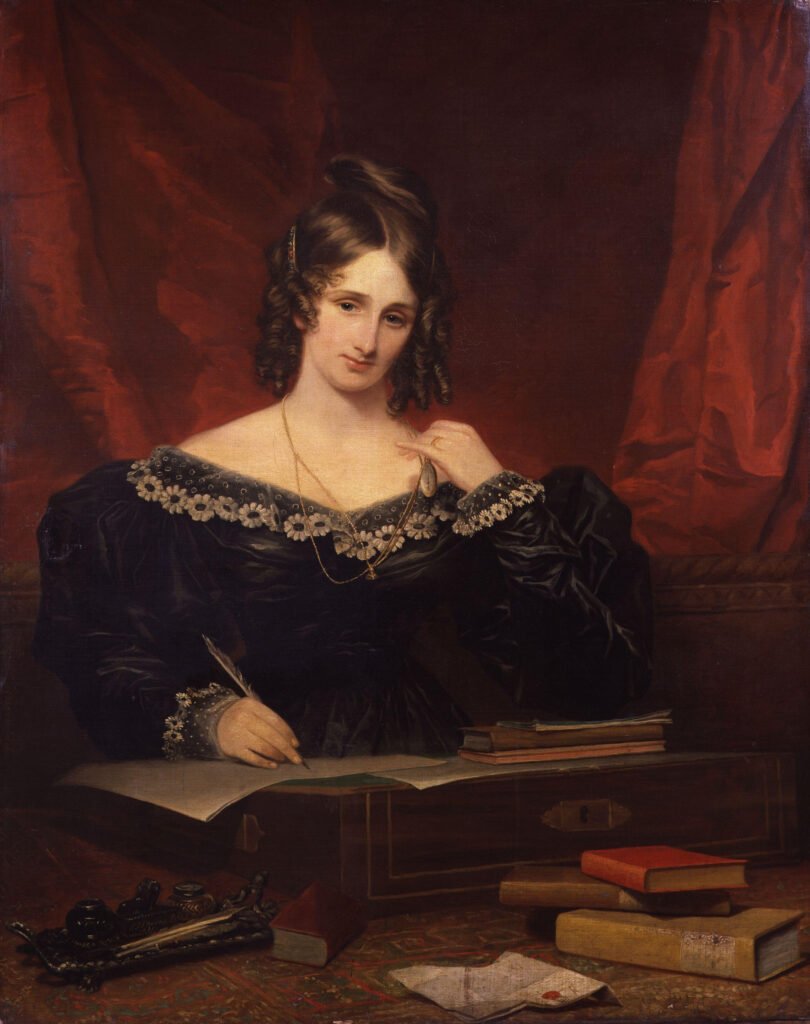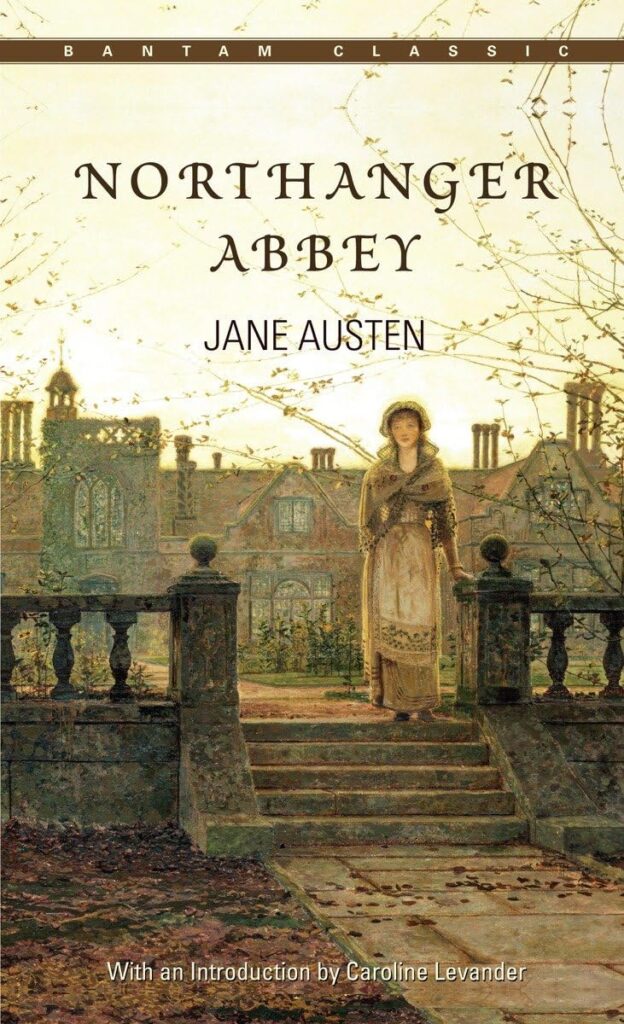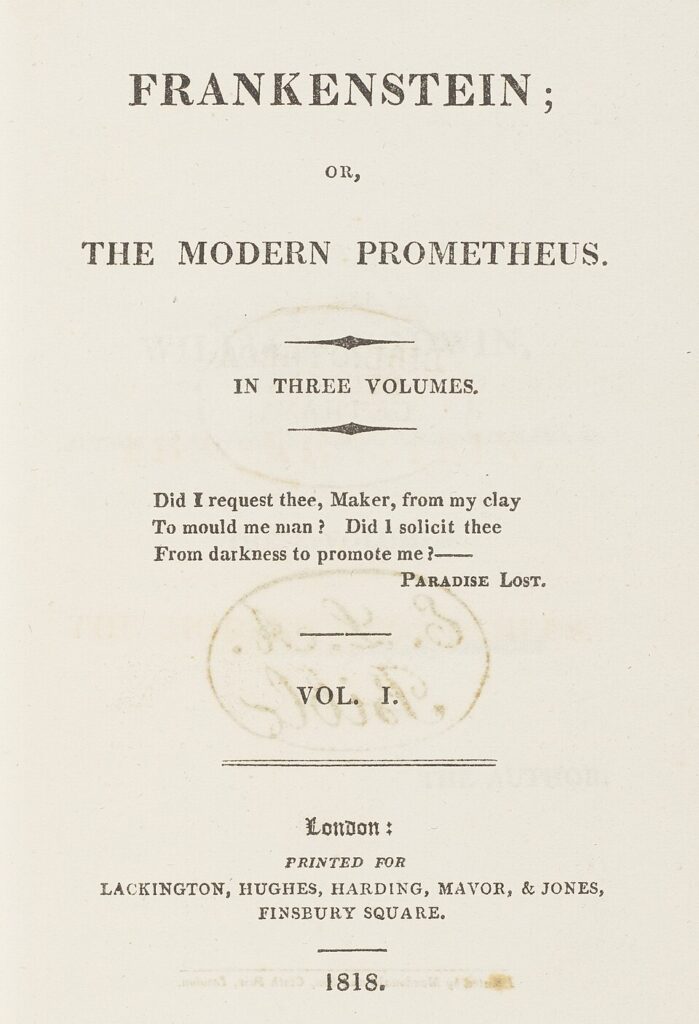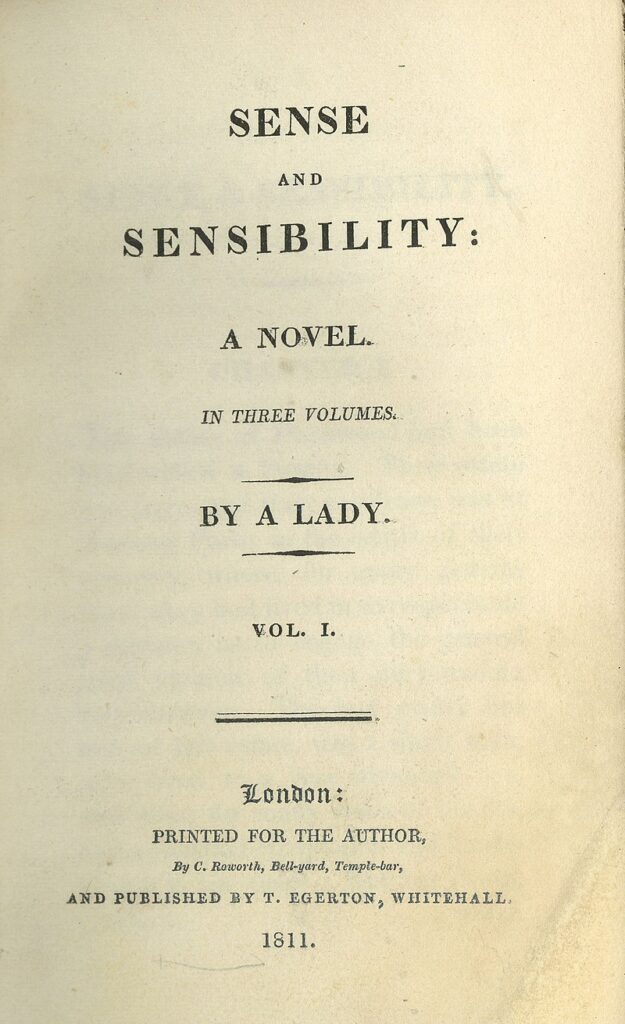At first glance, it’s hard to imagine two women more different than Jane Austen and Mary Shelley. Jane Austen, born 250 years ago, in 1775, never married. She did accept a marriage proposal in 1802 though, but, after sleeping over it, turned it down the next morning. Her novels, such as “Sense and Sensibility” and “Pride and Prejudice”, are masterpieces of psychology and subtle humor, evoking the quiet charms of the countryside and good society of southern England.
The life of Mary Shelley, née Godwin, seems to have been one of tragedy and scandal. In 1814, at the age of 17, she fell in love with the philosopher and poet Percy Shelley, who was already married. The lovers fled to France, and Mary gave birth to a premature daughter who lived only a few days. She married Percy after the suicide of Harriet, his first wife. One stormy night, while staying at Lord Byron’s villa on Lake Geneva, she writes the first lines of “Frankenstein, or the Modern Prometheus”, one of the precursors of science fiction literature, creating a character that has become a myth.
England’s beautiful city of Bath allows readers and walkers to bring Jane and Mary’s worlds together. Next to the elegant Queen Square, at number 40 Gay Street, the Jane Austen Centre retraces the writer’s career, her many stays in Bath and offers visitors the chance to enjoy a cup of tea in a very Regency setting. At number 37, on the same street, chance, or no doubt the demands of tourism marketing, has led to the installation of “Mary Shelley’s House of Frankenstein”. In addition to rooms recounting the life of Mary Shelley and the genesis of her famous novel and its many adaptations in popular culture, the house offers horror and escape rooms.
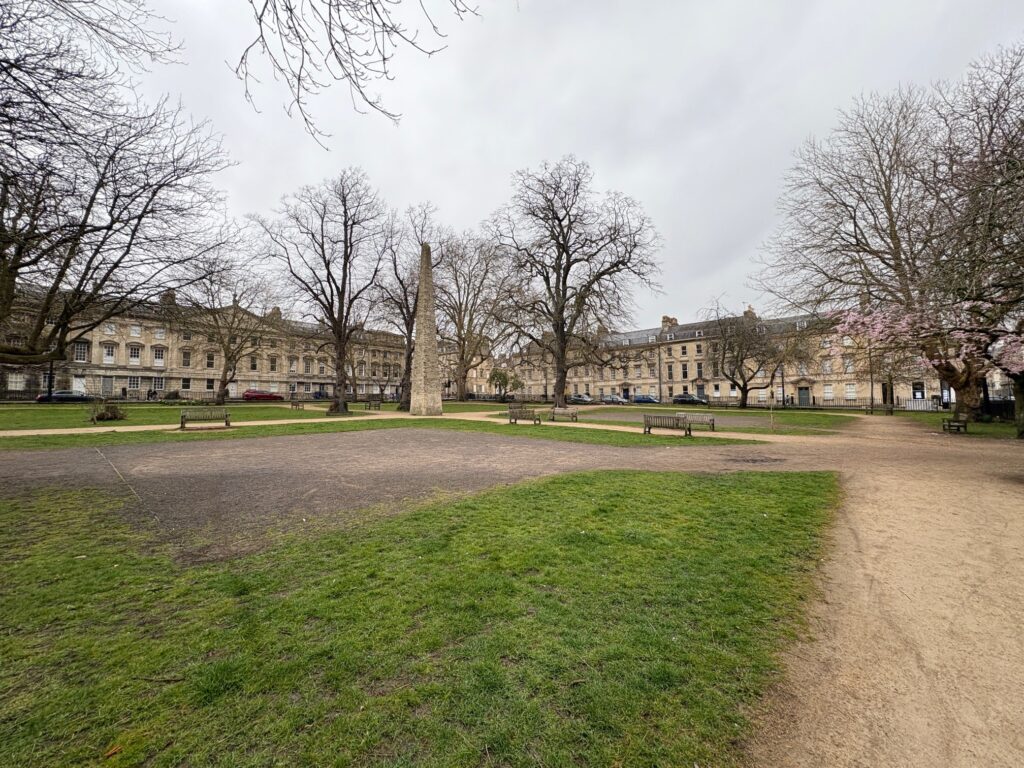
The Jane Austen Center proposes an excellent walk through the spa town, combining masterpieces of classical English architecture such as the Circus and Royal Crescent, or Great Pulteney Street, which extends the bridge of the same name, with the various houses where Jane Austen lived, reflecting the changing fortunes of her family, whose resources dwindled after the death of her father. Most of her books are set in the world of the English gentry, between priories, manors and cottages, nestled in the rolling hills of the Hampshire, Devon or Sussex countryside. But her novels are peppered with references to the social life of Bath, where the whole of England came to take the waters, and where her family made numerous visits.

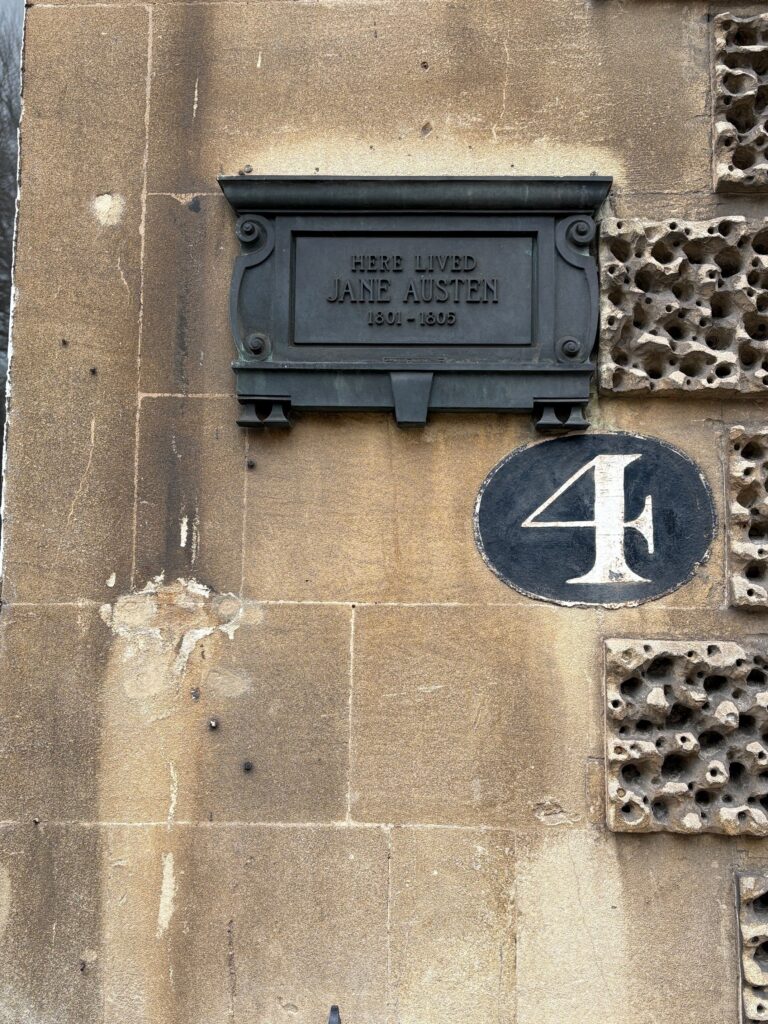
“Northanger Abbey”, Jane Austen’s first novel, written in 1798 and 1799, but published after her death in 1817, pokes fun at the trivialities of Bath society life. It is also a parody of the “Gothic novels” in vogue at the time, in which horror, mystery and romance mingle to titillate the minds of young women. Catherine Morland, a 17-year-old ingenue, arrives from her country rectory to attend the balls and receptions of the Bath season. She meets the Tilney family, Henry, his older brother Frederick and their sister Eleanor. Soon, Catherine’s father, General Tilney, invites her to the family’s old home, Northanger Abbey. The house’s ancient walls fire her imagination, especially when she learns that the general’s wife died there under mysterious circumstances nine years earlier.
Mary Shelley’s “Frankenstein” is also, at least initially, in the vein of Gothic novels. Victor Frankenstein is a student of natural philosophy who wants to unlock the secret of creation. He assembles a creature and brings it to life. But this being of superhuman strength is repulsive in appearance. The day after his creation, Frankenstein is exhausted and falls ill. After several months of convalescence, he learns that a monster is spreading terror between Geneva and Chamonix. Abandoned by his creator, the monster, sensitive and intelligent, had to learn to live on his own. He wanted to make contact with humans, but they rejected him out of fear. Wandering the mountains, he returns to the valleys only to exact his revenge. Frankenstein realizes the horror for which he is responsible, having lost all control over his creature, and decides to pursue it to eliminate it. But the monster is stronger and takes pleasure in luring his creator to the polar regions where the latter gets lost. Beyond the horror-filled folklore that has sprung up in the wake of the novel and its numerous stage and film adaptations, Mary Shelley’s work is a profound reflection on the dangers of modern science losing control of its discoveries and, equally, on the shortcomings of the human race, which, frightened by difference and a horrible appearance, has failed to welcome a being who only wanted to be loved.
On their return from Geneva, Mary and Percy Shelley settled in Bath. Mary worked on the manuscript of “Frankenstein” in a house where now stands an extension of the Pump Room bringing water to the bathhouses. The book was published anonymously in 1818, but as Percy signed the preface, readers imagined that the husband was the author of the novel. After Percy died, not returning from a sailing trip in the Gulf of Livorno in 1822, Mary worked hard to promote her husband’s literary works, while her authorship of “Frankenstein” was only gradually revealed through the revisions and new prefaces she wrote.
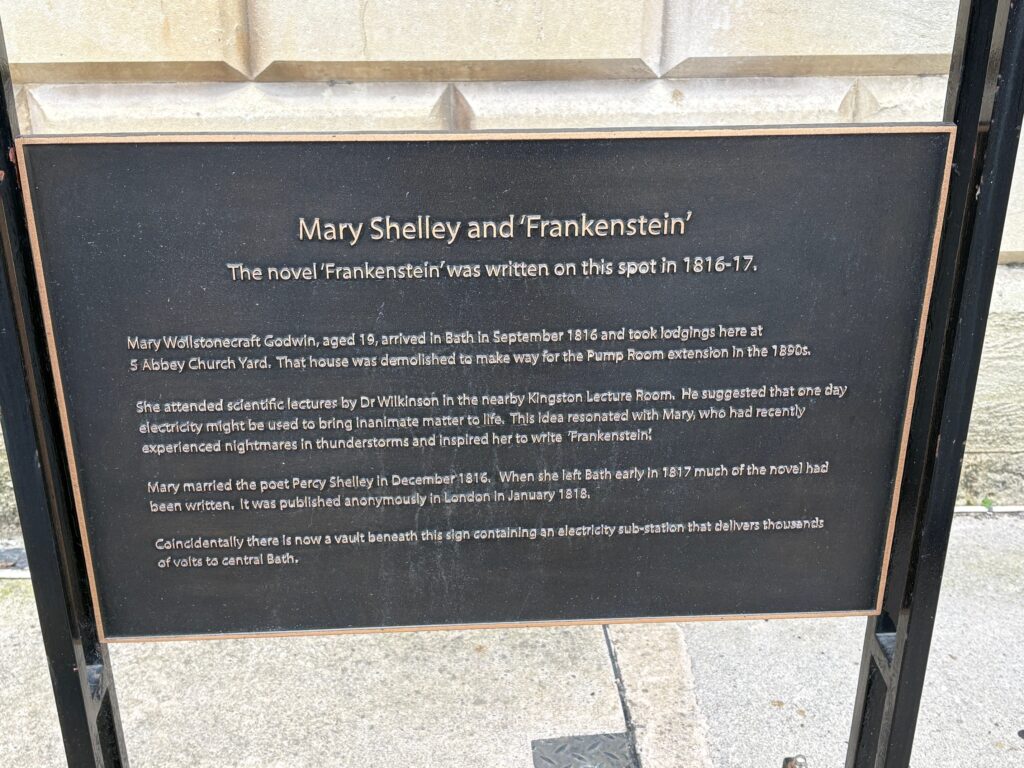
Similarly, when Jane Austen published “Sense and Sensibility” in 1811, she signed it “By a Lady”. It was only later that she was able to put her name on the cover of her novels, and some of them, such as “Northanger Abbey”, were not printed until after her death.
Despite their stylistic differences, in life and in their works, and beyond their sojourns in Bath when the city was an important cultural and social center, the two women have this in common. In a rigid society, they followed their hearts despite convention: Jane Austen by refusing a marriage she didn’t believe in, Mary Shelley by braving social opprobrium to follow Percy against all odds. And above all, in the early 19th century, they confronted the prejudices of a male-dominated literary world to publish their works, which today make them two giants of world literature.
